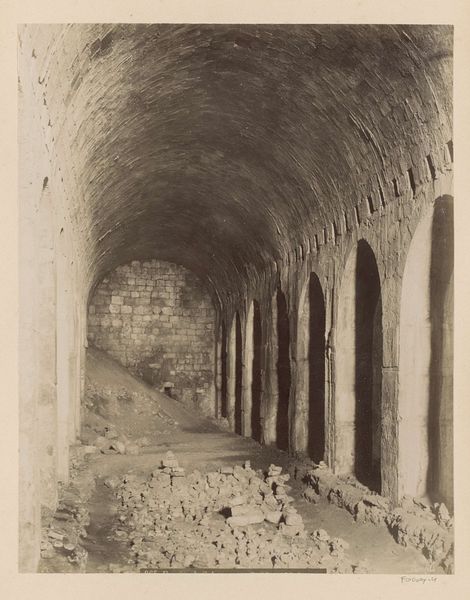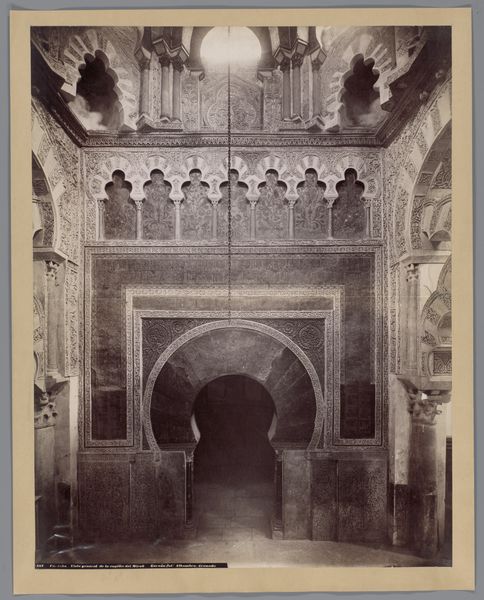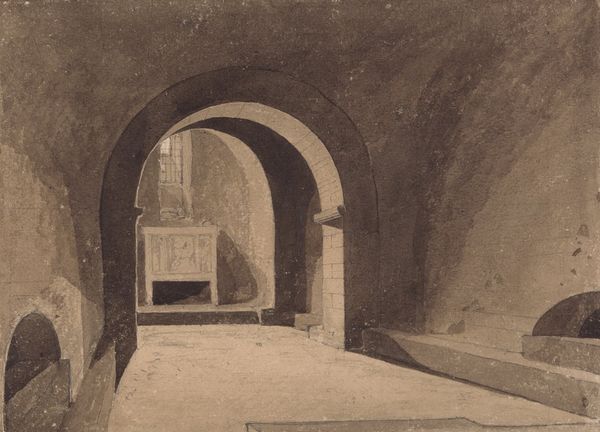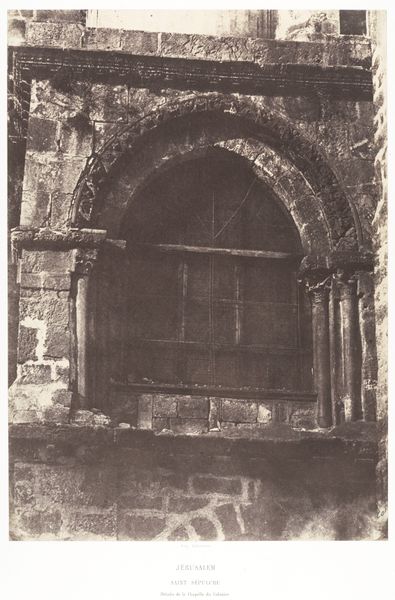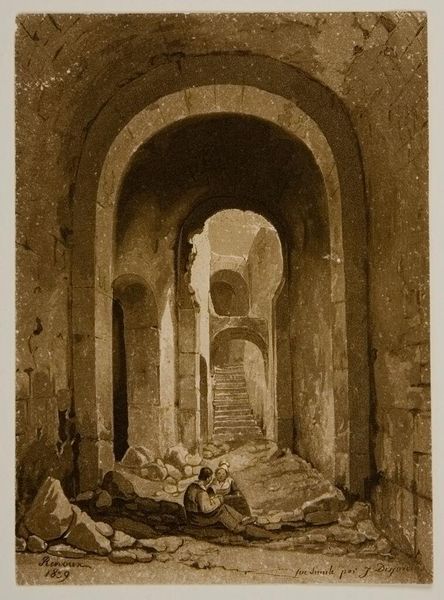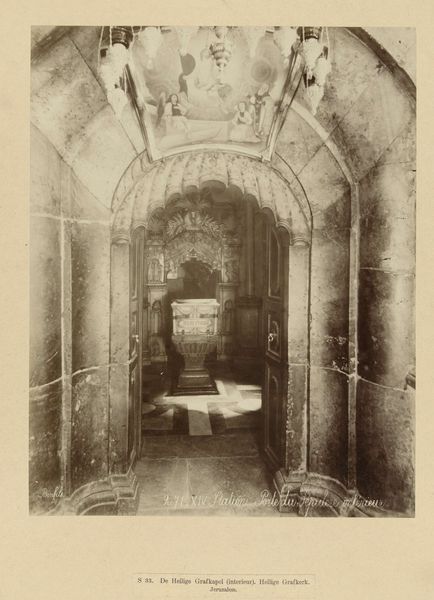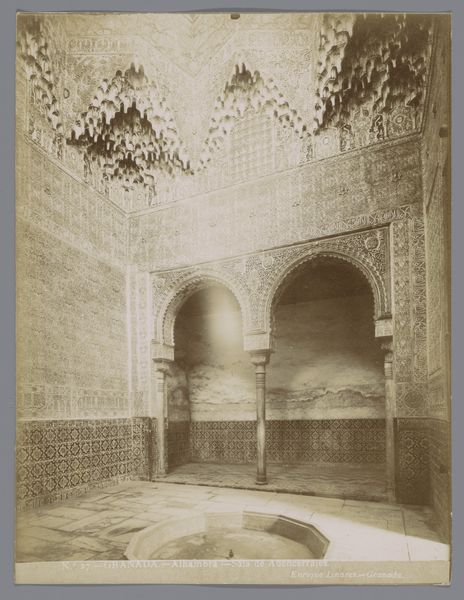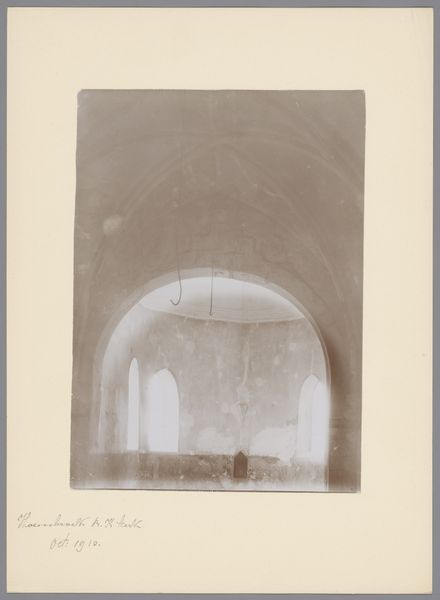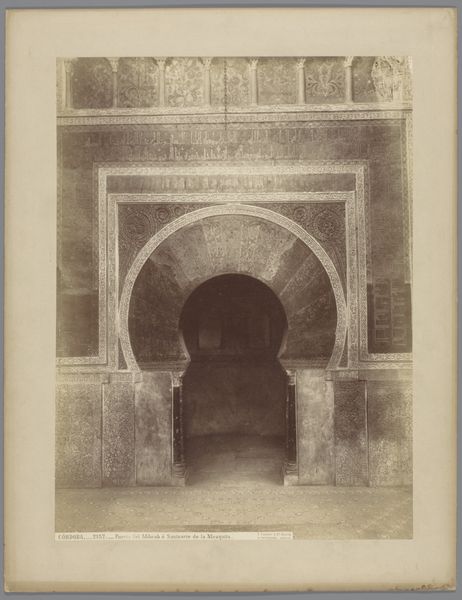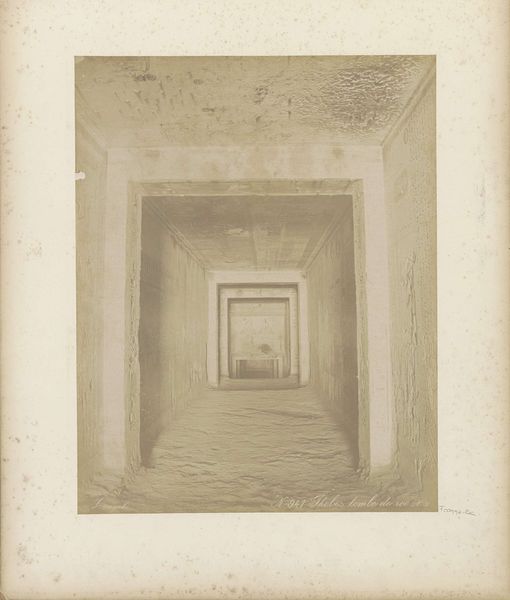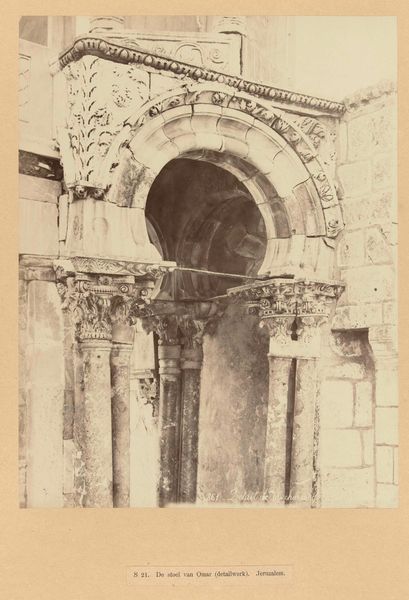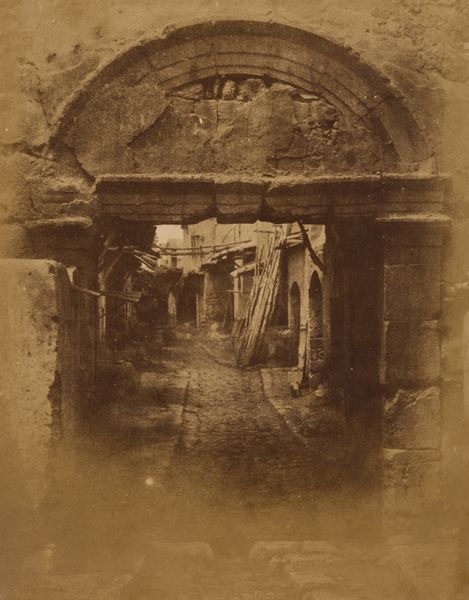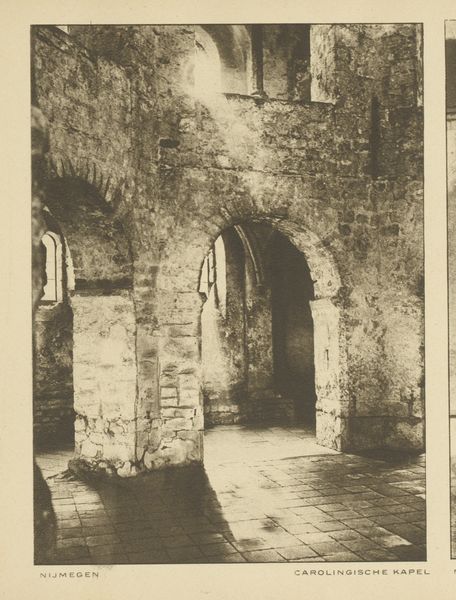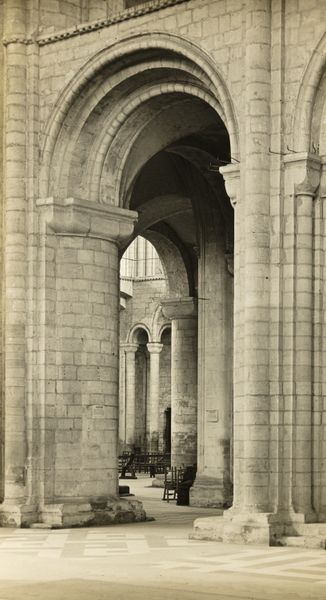
photography, gelatin-silver-print, architecture
#
landscape
#
ancient-egyptian-art
#
historic architecture
#
photography
#
ancient-mediterranean
#
gelatin-silver-print
#
19th century
#
architecture
Dimensions: height 267 mm, width 207 mm, height 558 mm, width 469 mm
Copyright: Rijks Museum: Open Domain
Curator: Here we have Jean Pascal Sébah's gelatin silver print, “Interieur van de tombe van Amenemhat te Beni Hassan,” taken between 1888 and 1895. Editor: There's a solemn stillness that pervades this image; it really draws me into the heart of this ancient tomb. The sheer weight and scale of the columns evoke a sense of awe and historical depth. Curator: Absolutely. Considering its historical context, Sébah's photograph not only documents the tomb’s architecture but also raises questions about colonial power dynamics inherent in the Western gaze upon Egyptian cultural heritage. It prompts us to reflect on issues of representation and cultural appropriation within archaeology and photography itself. Editor: The medium itself – gelatin silver print – speaks volumes. Think about the labor involved in producing these photographs in the late 19th century. From preparing the chemicals to transporting bulky equipment, photography in such locations involved significant material investment, revealing much about access and privilege. Curator: Indeed, the image almost romanticizes the ancient world, stripping away the messy realities of excavation, colonialism, and even tomb robbing. The very act of photographing becomes a political statement, asserting a certain authority over the past. I wonder, whose narrative are we truly seeing? Editor: That's a crucial point. And let’s consider what’s left out. What about the craftspeople, the labourers involved in the tomb's original construction and the contemporary workers helping with the archaeological dig? Their contributions, their materials – they fade into the background. Curator: Precisely, foregrounding Sébah as the sole creator overlooks the collective nature of both the tomb’s construction in ancient times and its rediscovery. It becomes a testament to the power of image-making, to highlight one person or moment while silencing many others. Editor: Looking closely, I see a texture almost like woven fabric repeated across the ceiling, and then consider the massive scale of the columns, presumably local stone, extracted, carved, transported... there is such an epic materiality at play. It begs you to acknowledge the work behind everything. Curator: Ultimately, examining this photograph requires that we interrogate its place within broader narratives of Orientalism and representation, mindful of both its artistic value and the complex social forces shaping its creation. Editor: Right, I am leaving here reflecting upon photography’s power and our own responsibility in interpreting the materiality, and context embedded within an image of something so grand yet also so specific in time and place.
Comments
No comments
Be the first to comment and join the conversation on the ultimate creative platform.
